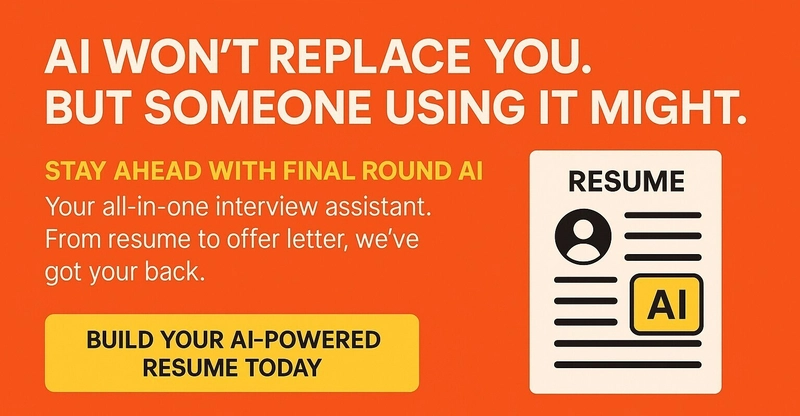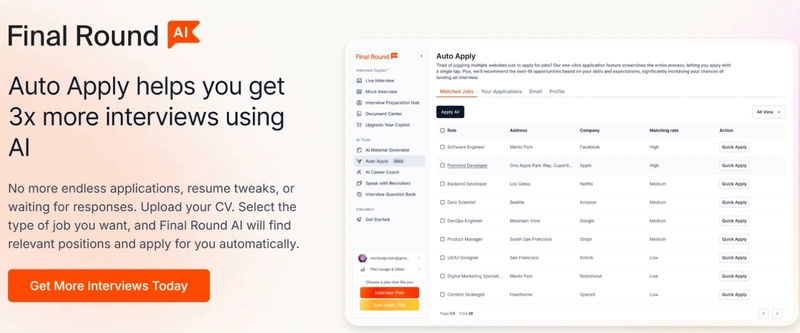Are you preparing for a front-end interview in 2025? 🌐 Whether you're eyeing a role at FAANG, a hot startup, or a product company, React is still ruling the UI kingdom 👑. To help you crush your next interview, I’ve compiled 40 React questions that top tech companies are asking this year, complete with clear answers 🔥
40 React Interview Questions With Smart Answers
1. ❓ What is React?
This is often the first question in any React interview. It helps gauge whether the candidate understands React's purpose and how it's different from other frameworks or libraries.
Answer:
React is a JavaScript library developed by Meta (formerly Facebook) for building user interfaces, especially for single-page applications where you want a fast, interactive user experience. It's declarative, component-based, and uses a virtual DOM to optimize rendering. Instead of manipulating the DOM directly, you describe what the UI should look like, and React takes care of updating it efficiently.
2. 🤔 What is JSX?
JSX is at the heart of writing React components. Interviewers ask this to see if you understand how React merges JavaScript and HTML.
Answer:
JSX (JavaScript XML) is a syntax extension for JavaScript that lets you write HTML-like code inside JavaScript. It makes your component structure more readable and expressive. Under the hood, JSX is transpiled into React.createElement() calls that generate virtual DOM elements. Example:
const greeting = <h1>Hello, world!h1>;3. 🧱 What is a component?
Components are the foundation of React. You can’t build a React app without understanding them deeply.
Answer:
A component in React is a reusable, self-contained piece of UI that defines what should appear on the screen. There are functional components (simpler and the modern standard with hooks) and class components (older, but still in use). Components receive props and manage state to render dynamic content.
4. 💡 What’s the difference between functional and class components?
Understanding the evolution from class to functional components and the role of hooks is critical in modern React.
Answer:
- Functional components are JavaScript functions that return JSX. They were initially stateless, but since React 16.8, they can manage state and side effects using hooks.
-
Class components use ES6 classes, have access to lifecycle methods like
componentDidMount, and manage state viathis.state.
Functional components are now preferred due to simpler syntax, better performance, and improved readability.
5. 🧠 What are props in React?
Props are essential for component communication. This question tests your understanding of one-way data flow.
Answer:
Props (short for properties) are read-only inputs passed from a parent component to a child component. They allow you to make components dynamic and reusable. Props enable one-way data binding, meaning data flows from parent to child.
Example:
<MyComponent name="Alice" />In MyComponent, props.name would be "Alice".

Try Final Round AI for FREE today! 🔥
6. 🙋🏻♂️ What is a hook in React?
Hooks transformed how we write React apps. This question reveals your comfort with modern React development.
Answer:
Hooks are special functions that let you “hook into” React features like state, context, and lifecycle methods without using classes. Introduced in React 16.8, they make functional components powerful and clean. Examples include useState, useEffect, useContext, and custom hooks.
7. 🧪 What does useState do?
State is the heart of interactivity. This question checks if you can manage local component state using hooks.
Answer:
useState is a React hook used to declare a piece of state in a functional component.
Example:
const [count, setCount] = useState(0);-
countis the current state value. -
setCountis the function to update that value.
It re-renders the component when the state changes.
8. 🎣 How does useEffect work?
Managing side effects (e.g., data fetching) in React is crucial. useEffect replaces several class lifecycle methods.
Answer:
useEffect runs after the component has rendered. It's used for side effects like fetching data, updating the DOM, or subscribing to services.
useEffect(() => {
document.title = `You clicked ${count} times`;
}, [count]);The dependency array ([count]) tells React to re-run the effect only when count changes.
9. 🎯 What is useContext used for?
It simplifies data sharing across deeply nested components without prop-drilling.
Answer:
useContext is a hook that allows you to consume values from a React Context directly in a functional component.
Example:
const value = useContext(MyContext);This avoids passing props manually through every level of the component tree. It’s great for theme switching, user authentication, and more.
10. 🤼♂️ What’s the difference between useEffect and useLayoutEffect?
Choosing the wrong one can cause performance issues or flickers. This question tests your deeper understanding of rendering.
Answer:
-
useEffectruns after the paint, meaning it doesn’t block the browser. -
useLayoutEffectruns synchronously after all DOM mutations but before the browser repaints.
Use useLayoutEffect for DOM measurements or synchronous updates. Otherwise, prefer useEffect to avoid blocking the UI.
11. ⏳ What are the main phases of a React component’s lifecycle?
Understanding lifecycle helps you manage when to load data, clean up subscriptions, or trigger re-renders effectively.
Answer:
React class components go through three main lifecycle phases:
-
Mounting Component is being created and inserted into the DOM (
constructor,componentDidMount). -
Updating Component is being re-rendered due to changes in props or state (
shouldComponentUpdate,componentDidUpdate). -
Unmounting Component is being removed from the DOM (
componentWillUnmount).
With hooks, you handle lifecycle logic using useEffect.
12. 📊 What is the virtual DOM?
It’s the secret behind React’s performance. Knowing this shows you understand how React optimizes UI rendering.
Answer:
The virtual DOM is a lightweight JavaScript representation of the real DOM. When the state changes, React:
- Creates a virtual DOM.
- Compares it to the previous version (using a diffing algorithm).
- Applies only the necessary changes to the actual DOM.
This process is fast and efficient compared to manipulating the DOM directly.
13. 🤝🏻 What is reconciliation in React?
This is how React updates the DOM. It’s tied closely to performance and rendering behavior.
Answer:
Reconciliation is the process by which React compares the new virtual DOM tree with the previous one and determines the minimum number of changes needed. It uses a diffing algorithm and key-based optimization for lists to efficiently update only what’s changed.
14. 🧩 What is the purpose of key in React lists?
This is a small detail that can lead to bugs if misunderstood. It’s critical for list rendering.
Answer:
A key is a special string attribute used to identify elements uniquely in a list. React uses it during reconciliation to track which items changed, added, or removed.
{items.map(item => <li key={item.id}>{item.name}li>)}Avoid using index as keys when the list can change.
15. 🔐 What is the difference between controlled and uncontrolled components?
Forms are everywhere. This tests if you understand how to manage input state properly in React.
Answer:
-
Controlled components use React state to manage form inputs. You control the value using
valueandonChange. -
Uncontrolled components let the DOM handle the input state, using
refto access values.
Controlled is preferred for consistency and validation.
Try Final Round AI for FREE today! 🔥
16. ☣ What is prop drilling and how can you avoid it?
This problem grows with app complexity. They want to know if you can architect scalable components.
Answer:
Prop drilling happens when you pass props through many levels of components just to reach a deeply nested child.
To avoid it:
- Use React Context
- Use state management libraries like Redux, Zustand, or Recoil
- Create component composition strategies
17. 📡 What is lifting state up in React?
This is a common pattern for shared state. It shows your grasp of React’s one-way data flow.
Answer:
Lifting state up means moving state to the closest common ancestor of the components that need to share it. This avoids duplication and ensures consistent data.
Example:
Move a selectedItem state from Child1 and Child2 to the Parent component and pass it via props.
18. 🏗 What are Higher Order Components (HOCs)?
HOCs are a powerful design pattern in React. Many libraries use them under the hood.
Answer:
A Higher-Order Component is a function that takes a component and returns a new component with additional props or logic.
const withLogger = (Component) => (props) => {
console.log('Rendering:', Component.name);
return <Component {...props} />;
};They are used for code reuse, authentication, theming, etc.
19. 🧰 What are render props?
This pattern allows flexible code sharing. It’s a key concept in reusable component design.
Answer:
A render prop is a technique where a component’s child is a function that returns JSX.
<MyComponent render={(data) => <p>{data}p>} />It allows you to pass behavior and logic to children in a customizable way, similar to HOCs.
20. ⚛️ What is React Fiber?
This shows deeper knowledge of how React works under the hood, especially for performance optimizations.
Answer:
React Fiber is the new reconciliation engine in React (since v16). It enables:
- Incremental rendering
- Prioritization of updates
- Error boundaries
- Concurrency support
It breaks work into chunks and spreads rendering over multiple frames for a smoother experience.
21. 🚀 How do you optimize performance in a React app?
Top tech companies love performance-minded engineers. This shows you can build apps that scale.
Answer:
You can optimize performance in several ways:
- Use React.memo to memoize functional components.
- Use
useMemo()anduseCallback()to avoid unnecessary calculations and re-creations. - Split code with React.lazy and Suspense.
- Keep component state local when possible.
- Avoid deep prop drilling or unnecessary renders.
- Leverage shouldComponentUpdate (class) or React.PureComponent.
22. 🧵 What is React.memo and when should you use it?
It’s an easy way to boost performance by preventing re-renders.
Answer:
React.memo is a higher-order component that memoizes a component, meaning it only re-renders if its props have changed.
const MemoizedComponent = React.memo(MyComponent);Use it for pure functional components that render the same output for the same props.
23. ⚖ What's the difference between useMemo and useCallback?
These are powerful but often confused. Interviewers want to see you know when and why to use them.
Answer:
-
useMemo(fn, deps)returns a memoized value. -
useCallback(fn, deps)returns a memoized function.
Use useMemo when you have expensive calculations, and useCallback when passing functions to optimized children (like those wrapped in React.memo).
24. 🧹 What are cleanup functions in useEffect?
Side effects can get messy. This shows you can manage memory and subscriptions responsibly.
Answer:
A cleanup function runs before the component unmounts or before the effect re-runs.
useEffect(() => {
const timer = setTimeout(() => {}, 1000);
return () => clearTimeout(timer);
}, []);This is crucial for cleaning event listeners, subscriptions, or timeouts.
25. 🧪 What is React.StrictMode?
It’s a developer tool that helps you write clean, future-proof code. Interviewers ask this to check modern best practices.
Answer:
- Detects unsafe lifecycle methods
- Warns about legacy API usage
- Detects unexpected side effects
It doesn't affect production builds and wraps your app like this:
<React.StrictMode>
<App />
React.StrictMode>26. 🧭 What is React Router?
Real-world apps need multiple pages. React Router is the go-to solution.
Answer:
React Router is a standard routing library for React. It allows you to handle navigation, URL parameters, and dynamic routing in single-page apps.
Key components:
-
-
-
: navigates between routes -
useParams,useNavigate: hooks for dynamic routing
27. 🗺 How do you handle redirects in React Router?
Routing control is essential, especially after actions like login or form submission.
Answer:
In React Router v6:
import { Navigate } from 'react-router-dom';
return <Navigate to="/dashboard" />;Or use useNavigate:
const navigate = useNavigate();
navigate('/login');28. ✍️ How do you handle forms in React?
Forms = real-world interactivity. Your answer shows how you structure user input and validations.
Answer:
You can manage forms using:
- Controlled components (
value,onChange) -
useStatefor input fields - Validation with libraries like Formik, React Hook Form, or manual logic
- Submit handler via
onSubmiton
Example:
const [name, setName] = useState('');
<form onSubmit={handleSubmit}>
<input value={name} onChange={(e) => setName(e.target.value)} />
form>29. 📦 What is React Hook Form?
It’s a trending tool to handle complex forms with ease.
Answer:
React Hook Form is a performance-first form library using uncontrolled components. It integrates smoothly with validation libraries like Yup.
const { register, handleSubmit } = useForm();
<input {...register("email")} />It provides better performance and less boilerplate than alternatives.
30. 🎣 What are custom hooks?
Custom hooks = DRY code. This question checks if you write reusable logic.
Answer:
Custom hooks are functions that use React hooks inside to encapsulate and reuse logic across components.
function useAuth() {
const [user, setUser] = useState(null);
// login/logout logic
return { user, login, logout };
}Prefix with use so React knows it follows hook rules.
31. 🔁 What is Redux?
It’s a powerful, widely used state management solution. Even if you're not using it, knowing it is key.
Answer:
Redux is a predictable state container for JavaScript apps. It uses a single global store, actions, and reducers to manage and update app state.
React connects to Redux via the React-Redux library using useSelector and useDispatch.
32. 🧩 What is the Redux flow?
This reveals if you truly understand how state flows in Redux.
Answer:
- UI dispatches an action
- Reducer receives current state + action and returns new state
- Store updates
- UI re-renders with the new state
33. ⚡ What is the Context API and when should you use it over Redux?
React has built-in tools too. This checks if you choose the right one.
Answer:
The Context API provides a way to pass data down the component tree without props. Use it when:
- You need lightweight state management
- The state isn't very complex
- You're avoiding adding Redux for small use cases like theme, user, or locale
34. 📚 What are reducers in Redux?
Reducers are the heart of Redux. If you don’t understand them, you can’t use Redux right.
Answer:
A reducer is a pure function that takes the current state and an action, and returns the new state.
function counterReducer(state = 0, action) {
switch (action.type) {
case 'INCREMENT': return state + 1;
default: return state;
}
}Reducers must be pure: no side effects.
35. ⚠ What is middleware in Redux?
This shows whether you understand async actions and side effects.
Answer:
Middleware in Redux is a function that sits between dispatching an action and the reducer. It’s often used for:
- Logging
- Crash reporting
- Async operations (with Redux Thunk or Redux Saga)
Example: Redux Thunk allows you to write action creators that return a function instead of an action.
36. 🧱 What are fragments in React?
It’s a small but elegant tool to avoid unnecessary DOM elements.
Answer:
React Fragments (<>>) let you return multiple elements without wrapping them in a div.
<>
<h1>Titleh1>
<p>Descriptionp>
>It improves semantic HTML and avoids excess nesting.
37. 💣 What are error boundaries?
Apps crash. This tests if you know how to catch React runtime errors properly.
Answer:
Error boundaries are React components that catch JavaScript errors in their children during rendering and display a fallback UI.
Only class components can define error boundaries using:
componentDidCatch()static getDerivedStateFromError()
38. 🔬 How do you test React components?
Quality = Test coverage. You’ll likely work in teams that use tests.
Answer:
Use:
- Jest: Testing framework
- React Testing Library: For testing UI like a user would
- Enzyme: Older, still used
Common practices:
- Test rendering
- Simulate user interaction
- Assert on output and state
39. 🚧 What is reconciliation and diffing?
Rendering efficiency matters. This shows your awareness of how React updates the DOM.
Answer:
Reconciliation is React’s way of updating the DOM by comparing the previous virtual DOM with the new one using a diffing algorithm. It updates only what changed for optimal performance.
40. ❌ What are some common mistakes in React?
Great devs don’t just know how to do it, they know what not to do.
Answer:
- Modifying state directly instead of using
setStateorsetX - Using index as
keyin lists - Forgetting cleanup in
useEffect - Too many unnecessary re-renders
- Not using controlled components for forms
- Deep prop drilling when context/state management would be better
🎉 Final Thoughts
Congrats! You just reviewed 40 React interview questions that top tech companies are asking in 2025. Mastering these questions will make you unstoppable and will put you miles ahead of the competition 🧗🏻♂️
Stay curious. Keep building. And go land that React dev role! 🔥
| Thanks for reading! 🙏🏻 Please follow Final Round AI for more 🧡 |
|---|






